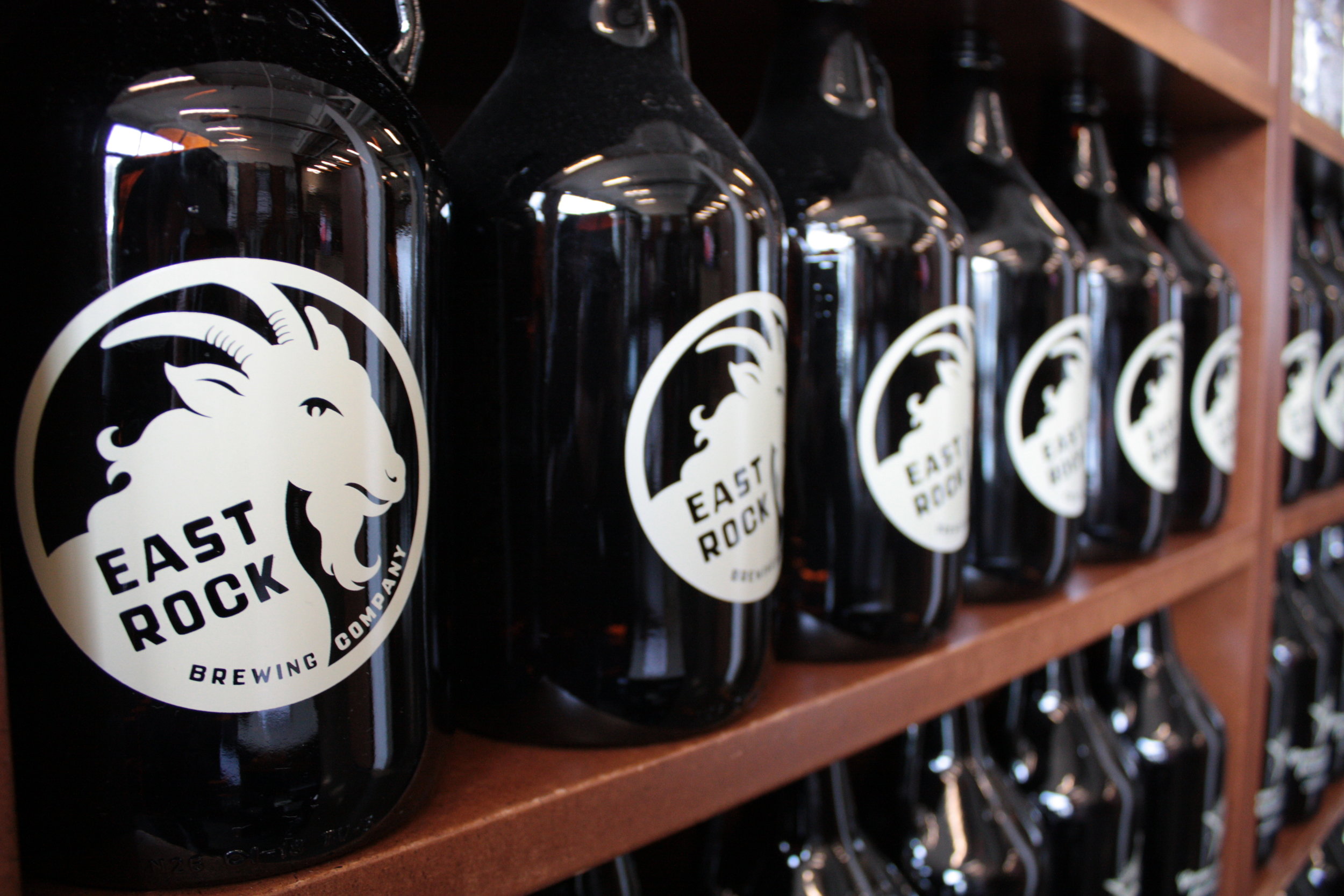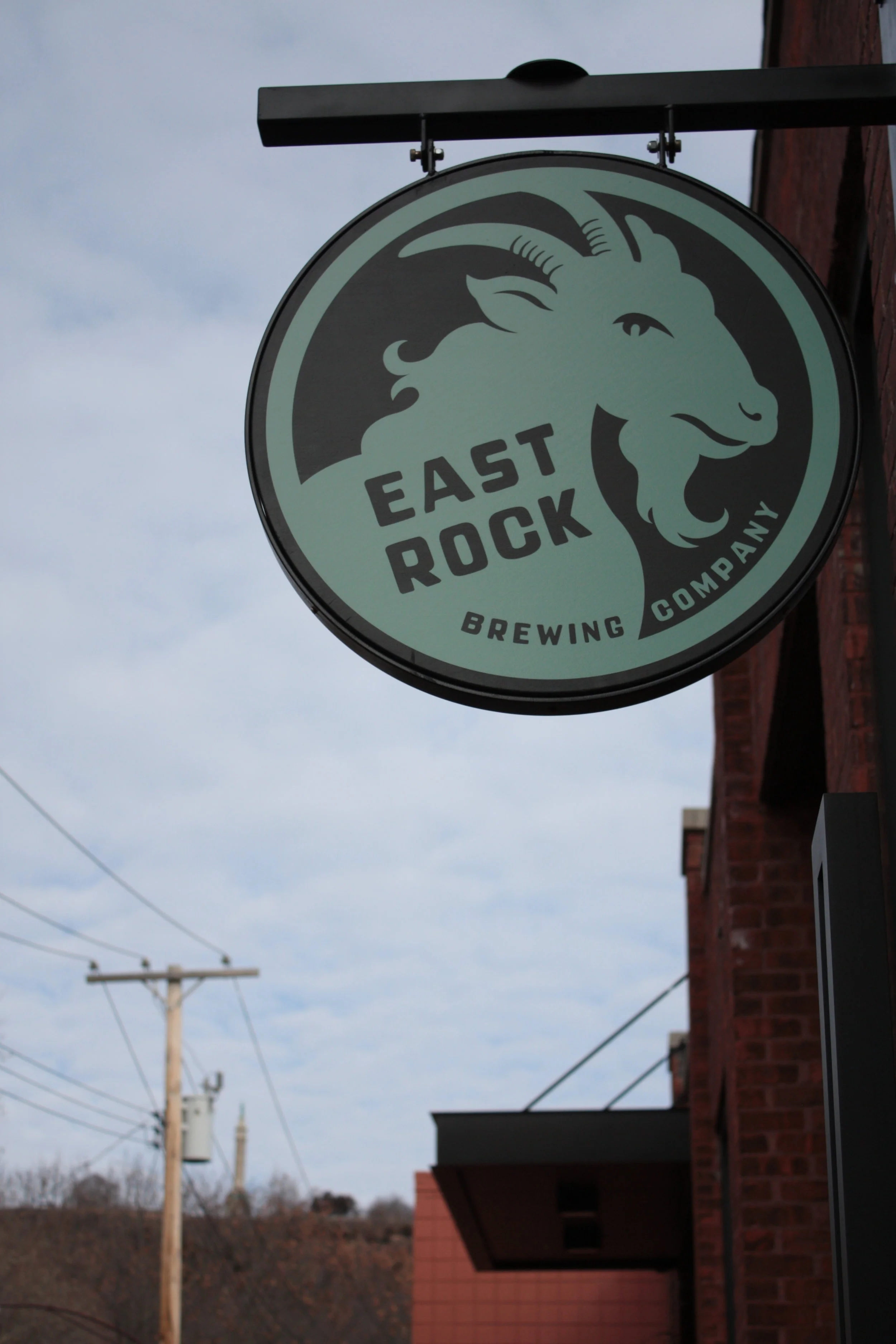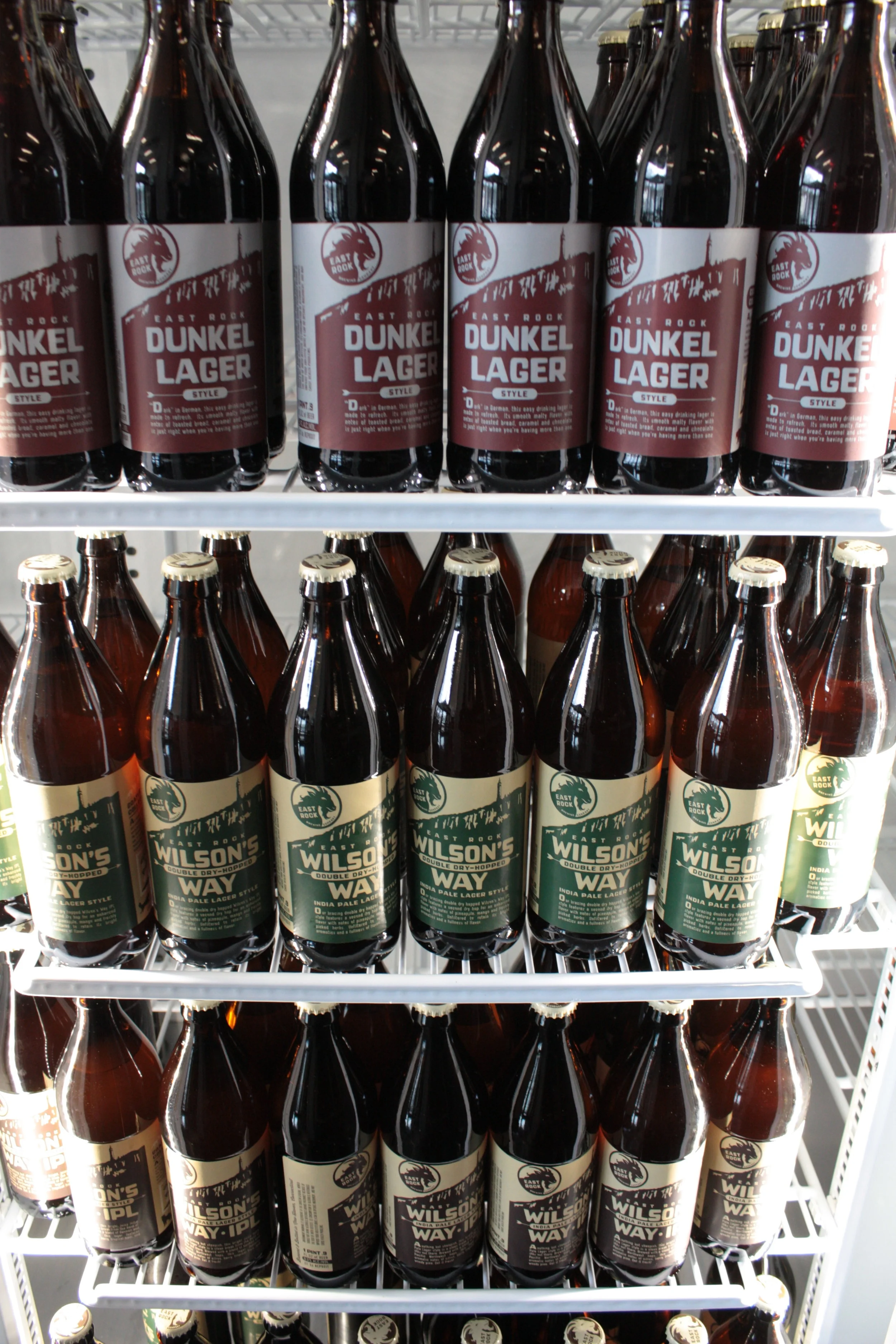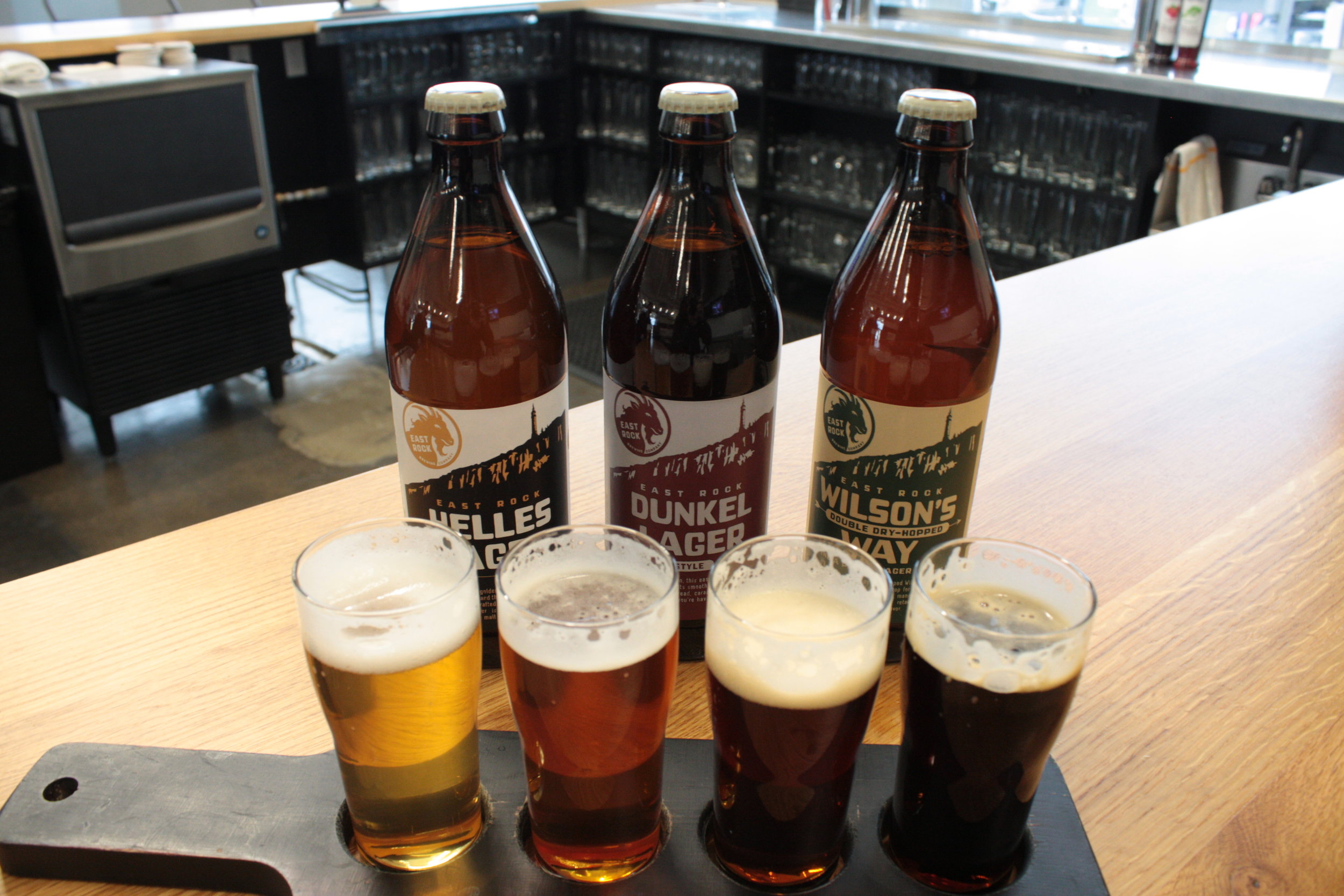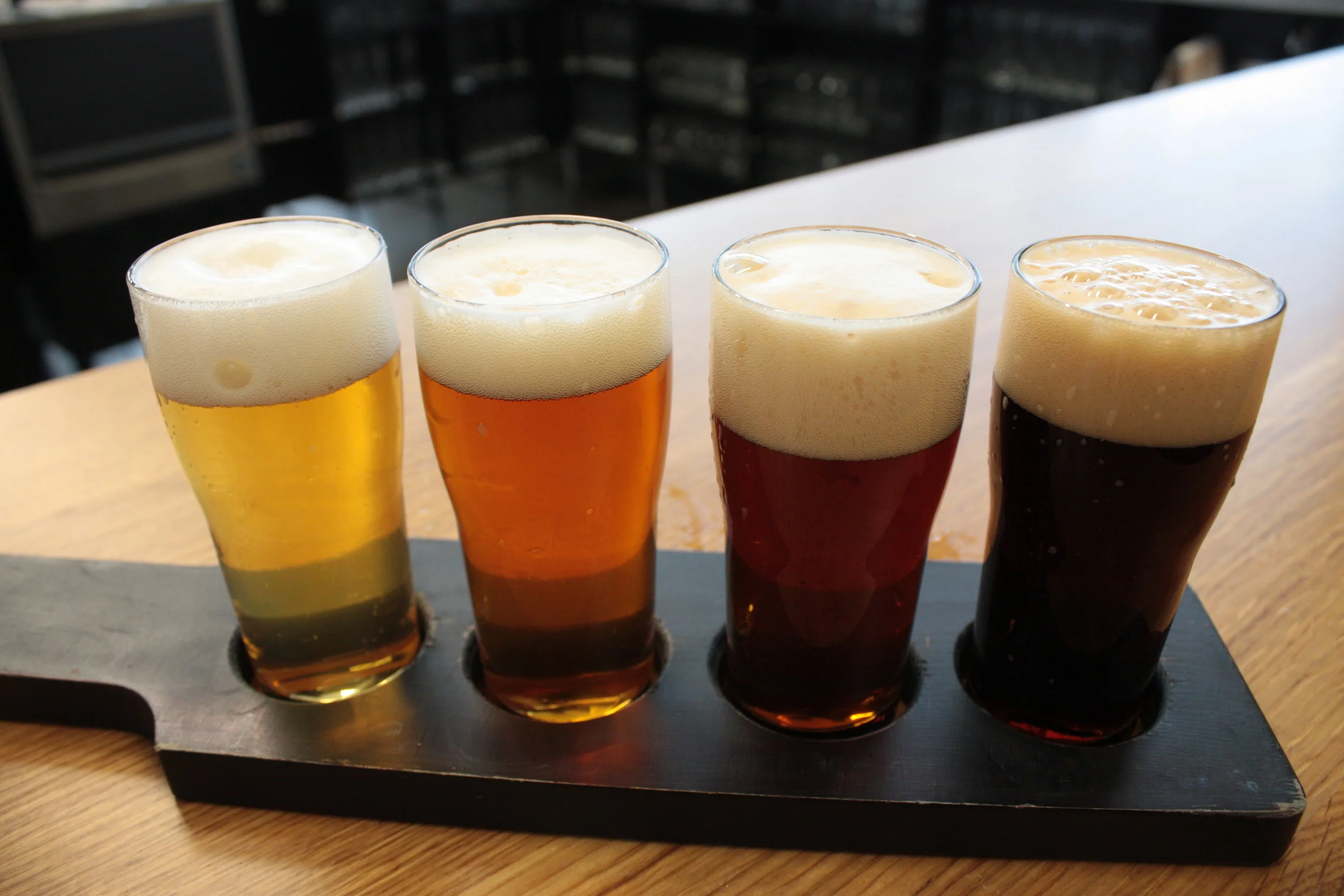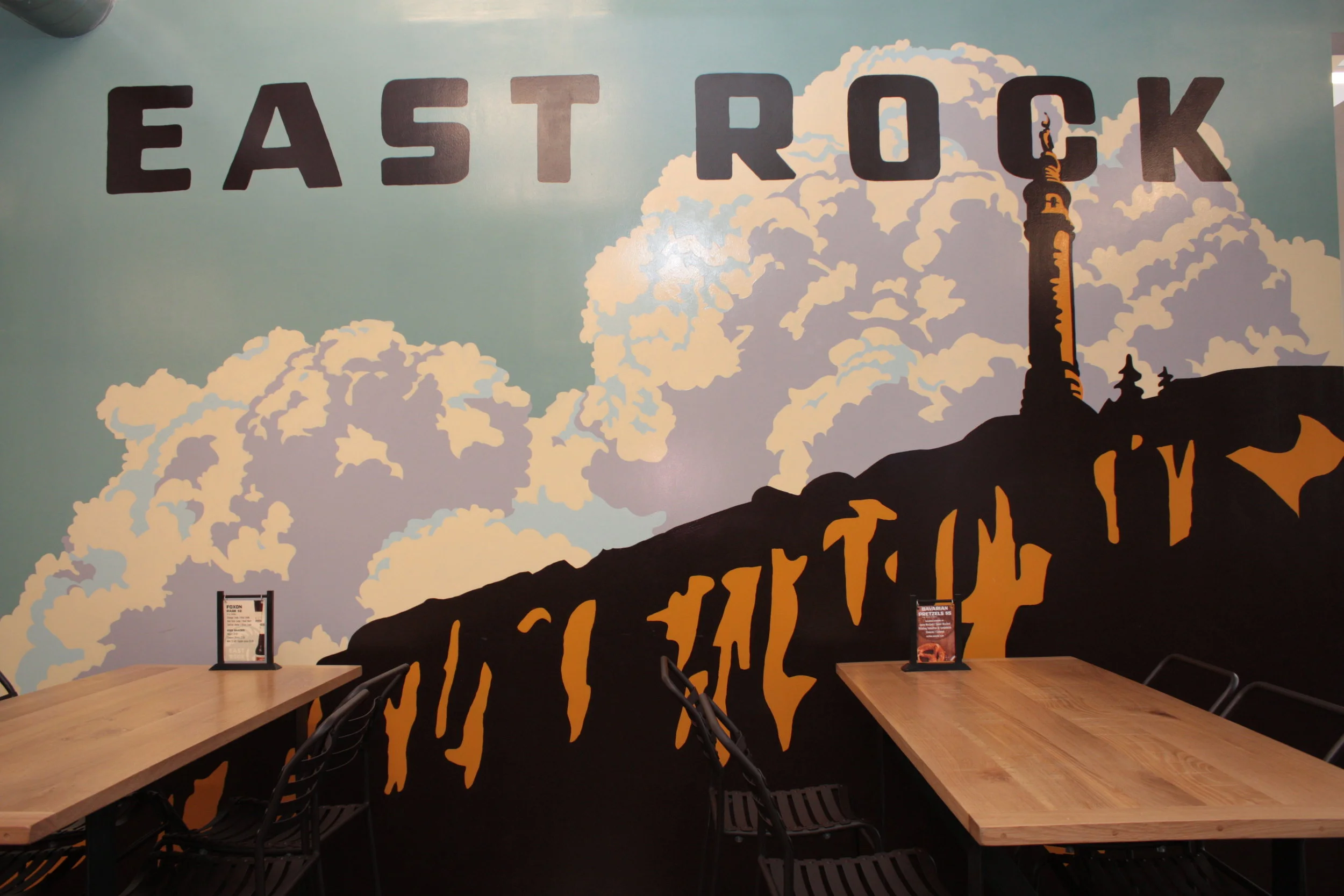East Rock Brewing Company Opens In New Haven
Pull back the hour hand on the clock of geologic time and the land in what was once New Haven begins to fill in. The sandstone rises up, glaciers come and go again in reverse, and the scenery levels off. The view across the water isn't Long Island - the glaciers pulled that land back with them - it's what will become Morocco. Now spin the clock forward again. The continents drift - ice, then not ice again - and the land erodes away until something seems to rise up again: the traprock scarp we know as East Rock. There's a lot of history here, and the newest bit to crop up is East Rock Brewing Company.
An easy walk from East Rock Park, the brewery is the most recent resident of a brick block hastily piled together at another notable moment in time: America's entry to World War I. The former Marlin ammunition factory was planned so quickly it was placed right across what used to be the final block of Canner St., a fact brothers Shaun and Tim Wilson discovered when they were digging up the old factory floor and discovered a road. Walk down Canner St. as it is now, and you come right up to the brewery's front door.
Most of Connecticut's breweries are in old manufacturing spaces, but few have been so aggressive with how much space they've taken as their own. East Rock Brewing has a tap room the size of half the breweries I've been to, and their brewhouse floor is large enough to hold all their brewing equipment and a youth hockey game. Abundant natural light floods the whitewashed space, spilling into the bar, and maximizing the hours workers could turn out shells to send over seas, over 100 years ago.
Over 200 people can comfortably mill around in the beer hall at East Rock, with taplines both by the front window and set behind the large horseshoe bar in back. Elsewhere in the space communal tables, racks of merchandise and growlers, and coolers of half liter bottles gamely attempt to fill the remaining area.
East Rock is one of two breweries in the state (along with Noble Jay in Niantic) which focus exclusively on lager beers. Head brewer Tim Wilson began at BeerWorks in Boston where he met a guy named Jack Hendler. Jack went on to start a lagerbrauerei of his own - we call it Jack's Abby - where Tim kept on working on recipes, brewing, and quality assurance. He made stops studying brewing at the Siebel Institute of Technology in Chicago and Doemens Academy in Munich before deciding to come back to Connecticut and talk his brother, Shaun, into the investment.
East Rock Helles Lager is what they call "the pinnacle of Bavarian brewing." It's a very light colored golden ale made from all pilsner malt - dry and clean from the first sip, but with a satisfying depth of body. It's all honey and fresh bread until a slight tang and vanishing bitterness from the old world hops. Easy to drink but still memorable, it should be a volume seller in the beer hall.
During Tim's time at Jack's Abbey, he tweaked, fettled, and massaged recipes until he and brewmaster Jack felt they had them just right. One of my all time favorite beers is Jack's Saxony Lager, and I told him so.
"That's my recipe. It's one of mine," Tim said. There was no way I was going to miss the houseVienna Lager at East Rock.
The Vienna is both a darker and lighter beer than the helles. Darker in color, but lighter in ABV at 4.8%, fresh bread crust pervades both the aroma and the taste of the beer. The color is still honeyed, but this time the honey's been stirred into tea. Some beers' qualities demand they be taken seriously in quantity, and it's well enough that Vienna and other East Rock beers come in half-liter (16.9oz.) bottles, as well as on tap, because too much of a good thing in this case is almost enough.
Look at the brewery's logo, or most of their art, and you will see what is, to scale, Goatzilla standing on East Rock. Towering nearly the height of the iconic Soldiers and Sailors monument to those who fought in WWI, the goat, common in German beer imagery*, is actually an homage to local history in New Haven's East Rock neighborhood, which used to be called "Goatville."
"Apparently there were lots of small farms with goats here a long time back," Tim told me. "I went to the New Haven Museum on Whitney and read all these old newspaper stories about goats getting loose in town, walking upstairs into people's apartments, eating their laundry - I guess they had a real taste for red flannel."
"We wanted to come back to Connecticut to start a brewery, and once we found this place we thought it would be a cool way to pay homage to the neighborhood, and still tie in the German roots of our beers."
*Goats frequently show up on German bock beer labels. The Bock beer style began in Einbeck, and when brewers from the region showed up in Munich, their accent was so thick the locals thought they were saying "ein bock," or "a billygoat," and it became a 19th century meme.
Two beers which surprised me at East Rock were their Dunkel and Black Lager. The dunkel is a maple syrup color under a dense head of tiny, sticky bubbles, and you'll notice the higher final gravity as a sweetness with your nose first. It's there in the flavor, too, but only in hints behind a dry, roasty body. This is a classic dunkel - dark ruby red, crystal clear body, and avoiding the syrupy nature which follows the color of so many other attempts. Sometimes a robust beer is like shrugging into a broken in sweatshirt on a cold night. It's beer like familiar clothes.
Black lagers were a quick trend in brewing ten years ago, and seemed to have all the staying power of a BumpIt. The main problem with most of them was an unpleasant, tannic bitterness, and it has kept me away from them for years. On my first recon trip to East Rock for this story I asked people in the tasting room what I should try, and was surprised to hear "the black lager" from three mouths simultaneously. I had to give it another go.
East Rock's Black Lager was one of the biggest surprises of (extremely late) 2018. More deepest ruby in the vein of Guinness than truly black, the malts convey coffee and toffee, but it's airy and light weight. I asked Tim how he managed to make a black lager smooth and rich without that acerbic bite, and he pointed to the roasted Carafa barley malt he uses which has be de-husked to cut back on the bitterness.
[IMG 6894]
Hop fans have several choices at the brewery, including the Hopfen Lager, a German spin on an American Pale Ale which adds more of the new-world hop fruit flavor and slightly scaled up bitterness, and Wilson's Way India Pale Lager.
The IPL is double dry hopped with El Dorado, Idaho 7, Citra, and Hellertau Blanc varietals, and it comes off herbal and juicy, but clean from the lager yeast fermentation. Wilson's is unfiltered, but just cloudy, with no murk, and Tim admits it's a nod to modern tastes.
"We're working to be a neighborhood tasting room here, so we really want to have something for everyone."
The variety at East Rock includes sours, and my final sample was their Berliner weisse, with a small dose of Woodruff syrup Tim says is common in Germany. The Berliner itself was very light (in body and ABV at 3.8%), more tart than sour, and the Woodruff gave it a slight vanilla flavor to my tongue. Tim says he gets more of a green apple effect, but everyone's palate speaks its own language.
East Rock is a new brewing company in an old space, making new versions of old world lagers. The neighborhood brewery and tap room is looking to add their own chapter to the long history of the place.
East Rock Brewing Company, open Wed. - Sun., 285 Nicoll St., New Haven; Eastrockbeer.com

